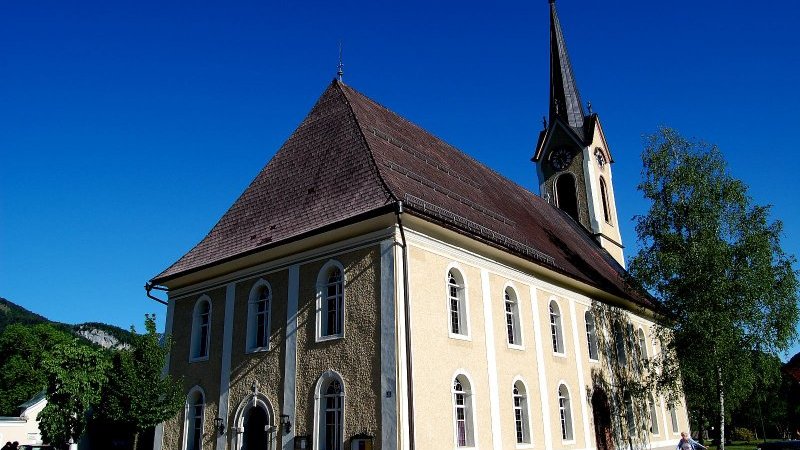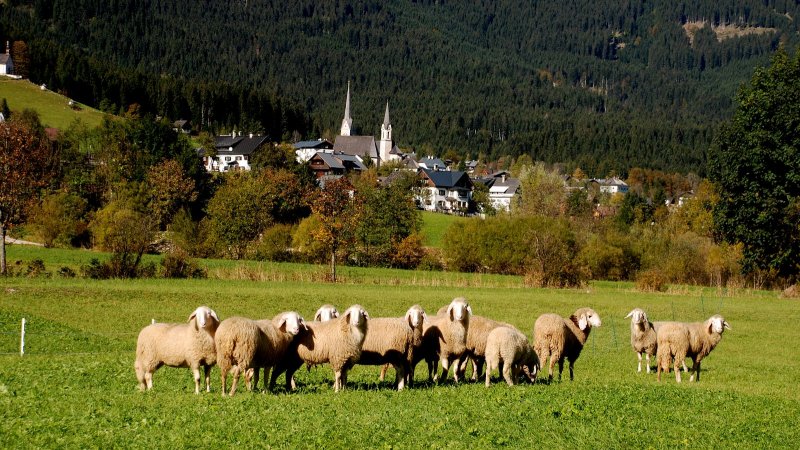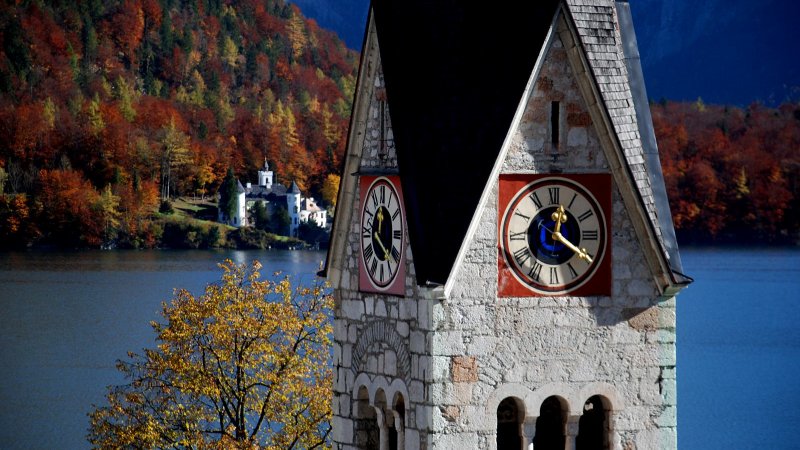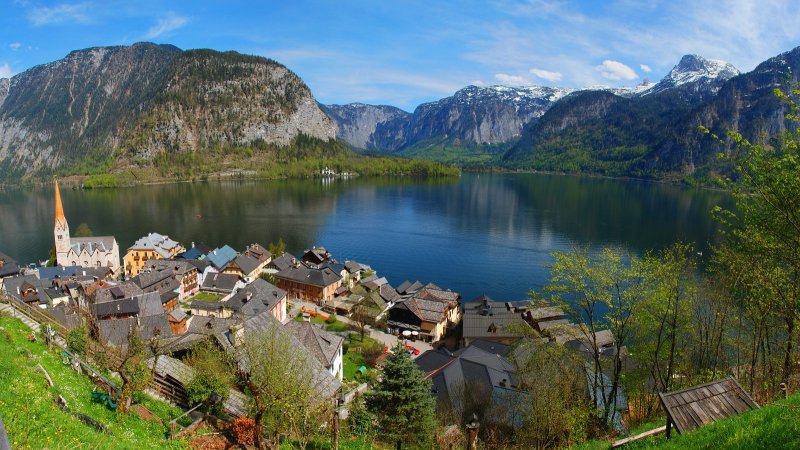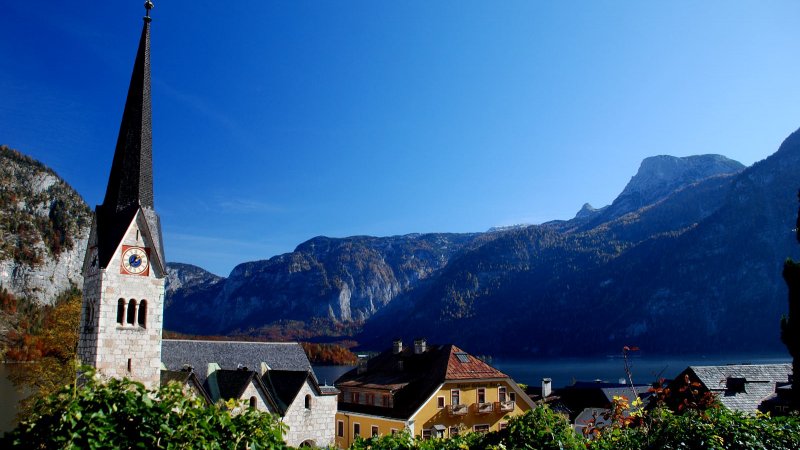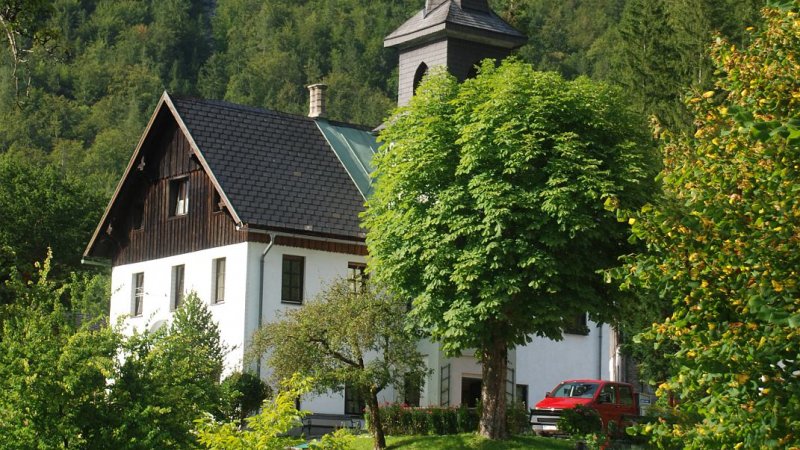Reformation in the Salzkammergut
500-year relationship
When "false prayer" was dangerous and Luther's disciples were persecuted. History & Stories from the World Heritage Site. In addition, all events on the Reformation in the Salzkammergut. We've got you covered!
As early as the 1530s, senior civil servants in the Salzkammergut had their sons study in Wittenberg. Gradually, the religious attitude changed; Lutheran sermons were preached in the churches, and the civil servants of the salt works, all the way up to the salt bailiff, soon adhered to the new doctrine, which was considered modern and innovative.
Everyone was able to live their faith almost unmolested, which also made excesses and fundamentalist currents possible. However, this freedom was soon restricted: the Anabaptist movement was also persecuted in the Salzkammergut. The religious differences soon turned into political disputes, until finally both sides gave in exhausted in the Peace of Augsburg of 1555. From then on, the sovereign determined the denomination of his subjects.
Peace and order
However, it took decades to enforce this agreement. Thus, the Counter-Reformation or Catholic reform in Austria did not become serious until the 1590s. The citizens of Aussee stubbornly refused to obey the new sovereign Ferdinand in religious matters. It was not until the last months of 1599 that an ensign forcibly established peace and order and restored the original faith. Numerous people had to emigrate. Facts were also to be created in the land above the Enns, and a new Catholic governor was to implement the policy of his sovereign.
The Mob of Hallstatt
However, it was not until Salzamtmann Spindler von Hofegg, a zealous Catholic partisan, replaced the Protestant Haydn at the head of the salt works in Gmunden, that the Counter-Reformation gained momentum. In July 1601, the salt bailiff undertook a "re-Catholicization tour. At first he seemed to be successful, but nowhere did he encounter any resistance. However, the mood changed radically, Spindler suddenly found himself surrounded by a mob of salt workers in Hallstatt, who loudly demanded freedom of religion: the signal for the uprising had been given. It was not until February 1602 that a front was formed to suppress the revolt. In a rapid pincer movement, troops advanced over the Pötschen Pass, the Gschütt and via Strobl into the Salzkammergut. Peace and order were quickly established, the ringleaders were punished, Ischl, Hallstatt and Lauffen lost their privileges as markets and sank back to village level.
Secret Places of Prayer
With the suppression of the so-called Salt Revolt in 1601/1602, the re-Catholicization of the Salzkammergut was (apparently) completed, the salt workers did not participate in the Peasants' War of 1626 and were rewarded with the restoration of their old rights. However, the attitude of most Protestants had not changed, they went underground and became secret Protestants. The Jesuits were called in to monitor the monastery of Traunkirchen and occupy the parish priesthood, later joined by the Capuchins.
For almost 180 years or 6 generations, an underground church shaped the region, with meeting places in various caves (Schwarzenbachloch/Goisern, Kalmooskirche/Goisern, Seekarkirche/Gosau). People behaved inconspicuously. New fuel was added to the flame by the "Sentbrief" of the Dürrnberg salt miner Schaitberger, who, contrary to earlier practice, recommended that Lutherans openly profess their religion. Religious and social tensions were mixed, culminating in the planned dismissal of the hated Goiser pastor Aichhofer in 1712.
The Age of Enlightenment
In the 1730s, the situation was completely different. The fire was fanned by the expulsion of the Lutherans from neighbouring Salzburg, where many fled to their co-religionists in the Salzkammergut. The conciliatory, but overtaxed salt bailiff Count Seeau traveled to the Salzkammergut and offered the recalcitrant Protestants free passage to Germany. However, the situation completely slipped away from him, and finally the government decided to make a show of strength and transplanted about 620 rebellious Lutherans to Transylvania. Now the heresy seemed to have been eradicated at the root.
The Enlightenment allowed religious tensions to recede into the background. Shortly after his accession to power, Josef II put an end to the persecutions and issued the Patent of Tolerance, which was made known in the Salzkammergut in December 1781. Only a few timidly found themselves to profess their faith. In the end, however, thousands of believers dared to do so, founding the Protestant congregation in Goisern and shortly afterwards in Gosau.
There was still a long way to go before equality. The Protestants were not granted the right to keep registers until 1849, and formal equality was granted with the Protestant Patent in 1861.
In the 20th century, the history of the Protestant Church was accompanied by ups and downs. In the 1930s, many tended towards German National Socialism because they saw Germany as a protector against the Catholic corporative state. The conclusion of the Concordat in 1933 may also serve as proof. Today's Protestant relations were finally regulated by the Protestant Law of 1961.
961.
Ecclesiastical events in the Salzkammergut
Services and events in churches in the Salzkammergut
Church is more than worship. Readings and concerts take place regularly in the numerous places of worship. And there are always excellent events there. Artists with well-known names and brilliant voices.
Salzkammergut booking - Are you still looking for accommodation?
Hotels and accommodation providers in Hallstatt, Bad Goisern, Gosau and Obertraun offer the ideal room or apartment for your holidays, no matter what your tastes. Aside from establishments rated according to the international "star" scale, you will also find around Lake Hallstatt in Austria businesses that have been awarded two to four "edelweiss". The more flowers, the greater comforts you can expect. Whether you eventually find your cozy nest in an elegant 5-star luxury hotel, at comfortable guesthouse, a family-friendly apartment, or on a traditional farm, the choice is always entirely up to you.

